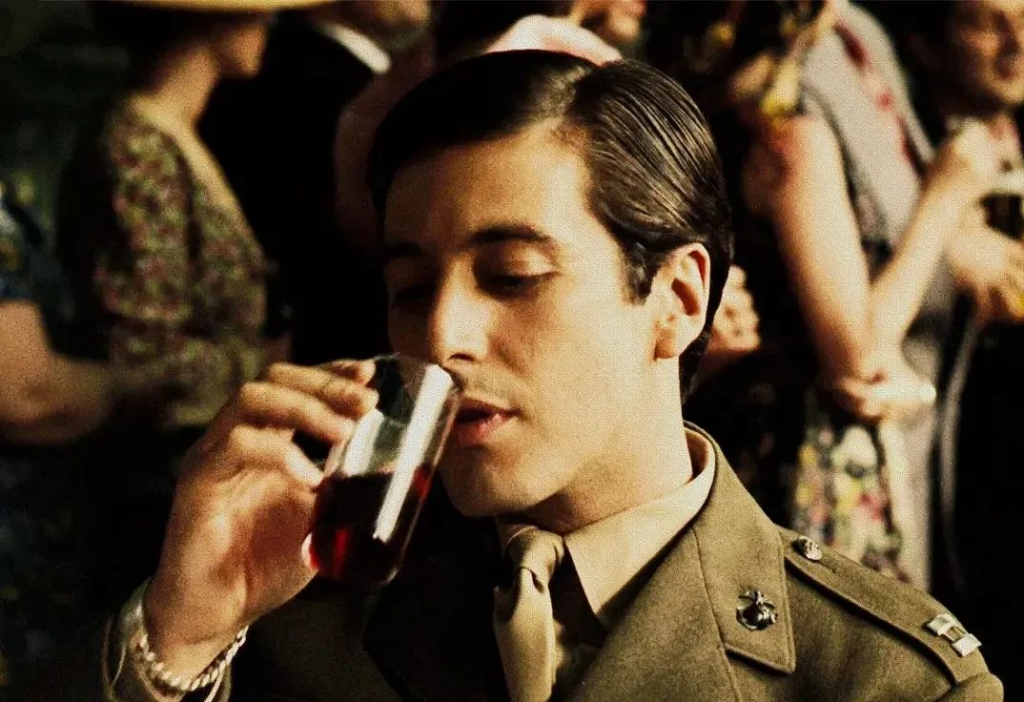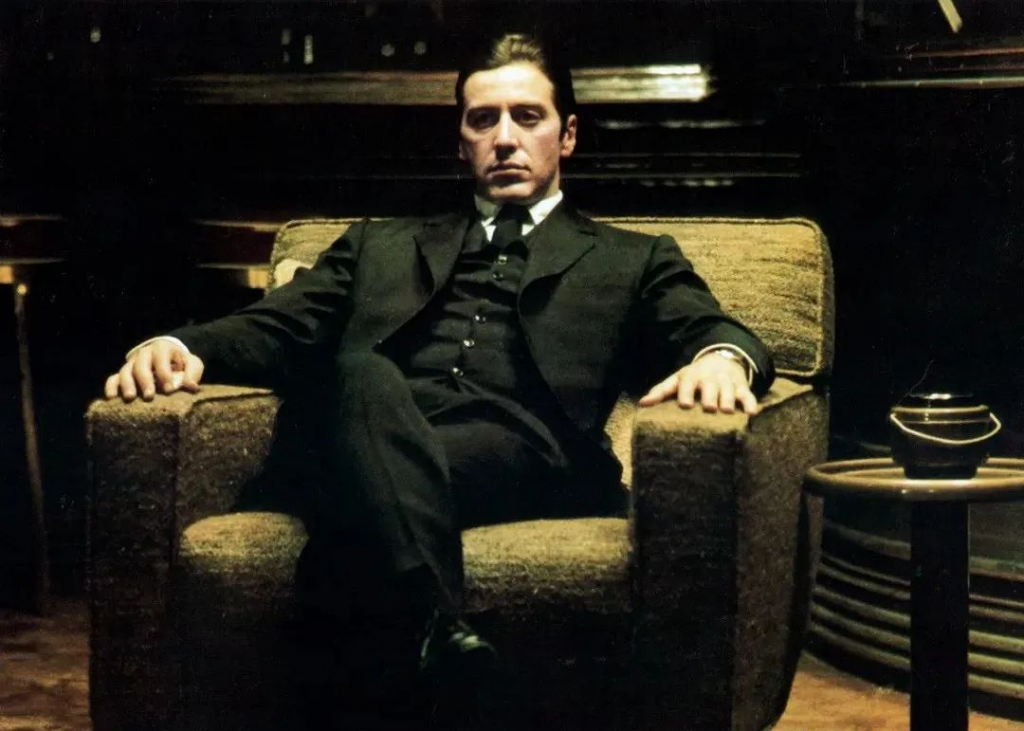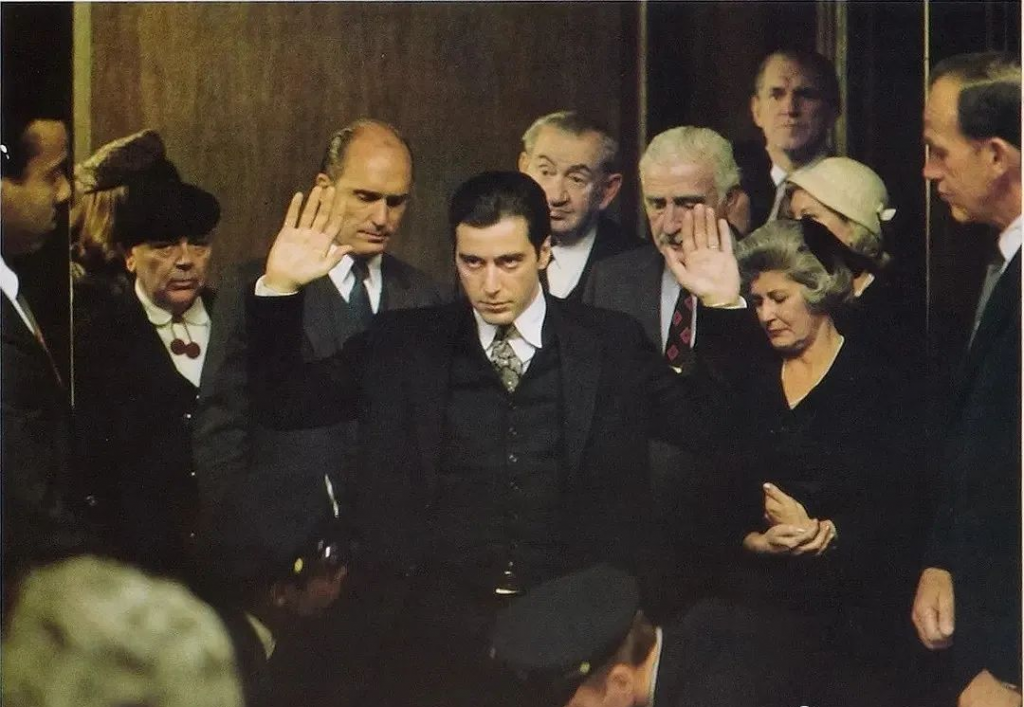The Godfather trilogy: a noir classic in the intersection of light, shadow and fate

The Godfather trilogy, directed by Coppola, was born between 1972 and 1990, with The Godfather I becoming a hit upon its release in 1972, followed by The Godfather II in 1974, and The Godfather III in 1990, which quickly became a worldwide hit. Coppola’s “The Godfather” series, based on Mario Puzo’s best-selling novel, is a classic that shows the struggle between several mob families in New York City in the 1940s. It has won 11 major awards, including the Oscar, and has been nominated 15 times. The excellent performances of Marlon Brando and Al Pacino have gained it a great reputation. The director does not facially portray the gangster characters as a murderous bully family, but re-examines the mob family from a human perspective. The film’s unique narrative perspective, clever editing techniques, and unique approach to establishing biographies for characters were mostly borrowed by later films of the same genre. In the film, director Coppola attempts to show the film’s customs by constructing a dramatic context, to show the development of three generations of godfathers by creating a biography for the characters, and to use the Corleone family as the narrative axis, trying to narrate the struggle of Italian immigrants from a personal perspective under the background of the gangster genre.

01The beginning: nostalgic light and long shots
Gangster films are very much about the beginning: muddy city streets, police sirens, gunshots, murders, screams and other elements form the beginning of most gangster films. The Godfather, on the other hand, starts with a big wedding, and it’s this kind of beginning that gives birth to a classic. “Behind great wealth lies sin.” This is the first sentence of the original, the film “The Godfather” is also from the first shot to tell the wealth and sin. So to speak, “The Godfather” through the film nearly three hours, every second with the assassination, planning, chasing life, offsetting debts, street murder, crossroads, home destruction, etc. have a direct or indirect connection. The first paragraph of “The Godfather” is almost identical to the original in its narrative style, and it is the paragraph with the most characters in the film. In this long paragraph, the central event is the grand wedding of Godfather Vito Corleone’s daughter Connie. Almost all the characters in the film, including every member of the Corleone family and some people with interests in the family, make their appearance, and the status and influence of the Corleone family is conveyed to the audience for the first time through different ways. The laughter and singing in the garden contrasts with the dark and gloomy atmosphere in the Godfather’s study, where a behind-the-scenes deal is made.
In this scene, the Godfather’s appearance is designed with great care, which is a classic 3 minutes and 40 seconds of long shots. At the beginning of the film, the audience first heard the voice of the funeral home owner, Bonasera, about his daughter’s injustice, and then as the camera slowly pulled back, a close-up of the funeral home owner’s face appeared in the picture. In the process of his narration, the camera is very slow to pull the camera, in the words of director Coppola, “in the technical conditions of the time, slow can not be slow”, and the camera is still on the funeral home owner, the camera has been slowly pulling away. Then the camera panned, the Godfather’s back in the foreground slowly moved past. In the first four minutes of the film, the audience can not see the Godfather’s face, except for his voice. In the dark corner of his back to the audience, he has only one small action in this shot, he coldly made a gesture of a small swing, the attendant immediately for the crier to bring a small glass of red wine. In the entire narrative process of the undertaker, he himself has been the central figure in the camera, but the audience can clearly feel the power of the big man hidden in the dark, although he has not yet revealed. This is the first cinematic image of “The Godfather”. This long shot, despite the flow but smooth and unmarked, in a camera position continued to pan for nearly four minutes, all the way from the funeral home owner’s bitter face frontal panning to the Godfather’s back. This is a typical subjective shot, the picture always with the Godfather Corleone’s point of view to examine everything. After the shot of the Godfather’s back is a counter-punch shot, giving a close-up of the Godfather Corleone, who answers to Bonasera’s plea. Then there is a panoramic shot showing the people and objects in the study. In terms of these shots, it’s not the standard panorama-back-and-forth shot combination, but it’s a common Hollywood editing technique. In the Godfather’s study in this group of shots, a breakdown, should be shot by four camera positions, the camera always face the characters in the middle of the scene, and the height of the flat figure, panning switch of the motionless, the lens internal montage is still delicate and consistent. The Godfather’s cinematographer is Gordon Willis, his grasp of the tone of the film is very accurate, in the character portrayal, scene description and the reproduction of the sense of the times have a magic. The first group of shots of the film well reflects the cinematographer’s understanding of the whole film, setting the tone for the whole film’s photography style.

02 Black film eternal theme
The eternal theme of film noir – blood, violence and assassination. The first is the assassination of the Godfather. The film does not play a lot of assassination footage when setting up the assassination of the Godfather, but uses a fixed shot approach to create a sense of tension through the continuous tightness of scenes and shots. In the assassination of the Godfather in this scene, the Godfather got out of the car to buy fruit, he presented his back to the audience, and then switched to the scene, the camera turned to the two assassins hiding in the street corner. Assassins to perform the assassination of the entire process without any killing, only a few crisp gunshots and assassins to complete the task after the sound of escape. The whole assassination process only used 16 shots, concise and powerful. The first four shots depict the Godfather buying fruit, and the last few shots show the simple assassination action, the more simple and natural it is, the more there is a visual effect of surprise.
The second shot is the execution of the traitor Pauli. Previous assassination scenes will often use a lot of fast editing to render the fierce and struggle of the assassination, coupled with the close up camera scenes to enhance the picture effect. Surprisingly, the scene of Paulie’s execution uses a panoramic fixed shot. In the middle of nowhere, a car parked in the open ground, the left is the Statue of Liberty, the right is the tall figure of the Godfather, the car behind the killer skillfully shot the traitor Paulie. And at this time the music is really calm, plus the Godfather light sentence “throw away the gun, bring bagels” is very clever, here the audience will certainly rise in the heart of the fragility of life, small sad feelings.

The third is the scene where the Godfather’s eldest son, Sonny, is designed to be assassinated. Compared with the previous scenes of quiet and simple assassination, this assassination can be regarded as the entire film in the full flavor of blood, the highest index of violence, is the director’s careful design. Many noisy and slightly strange ringing sounds, laying out a bloody storm is about to be staged: the phone suddenly ringing, children crying incessantly, cursing on the phone, etc., are the signs of this bloodbath. When Sonny learns on the phone that his sister Connie has been severely beaten by her husband, he drives out of the villa and is shot at a toll booth, riddled with bullet holes. Afterwards, the head was kicked and the body was brutally made up with several shots, even the image of bullets shot into the body and exploded among the body was also shown very realistically, graphically portraying this violent scene and revealing the cruelty and violence of the Mafia. The fourth is the Godfather’s greatest enemy – the enemy was assassinated. This scene is the turning point of the fate of the main character in the film, and the tipping point where he is torn between good and evil. In order to render Mike Corleone’s complex and tangled inner activities, the film deliberately added a montage of images, the sound was reduced, the unintentional collision between knives, forks and plates was amplified, and Mike Corleone’s nervous psychological changes were revealed. At the same time in the shooting process, and superimposed several close-up shots, so that the audience can more clearly see Corleone’s facial reactions. This series of rendering and padding, deepen the visual sense and consciousness stimulation, showing the power of “consciousness violence”.

03 The Role of Film Music
The music of “The Godfather” trilogy is very rich in classical music style, and each film is extremely elaborate in music, which better reflects the functional role of music in the film. The Godfather” trilogy to “softly confess” and “Godfather Waltz” as the theme music, each section of music has its own unique characteristics, clear between the paragraphs, contains the elements of the theme music, reflecting the integrity of the music. In “Softly Confess” and “Waltz of the Godfather” on the basis of the theme melody, soundtrack master Nino Rota uses a variety of variations to express different emotions and connotations of the film, both in various forms in the film appear frequently, playing a lyrical emotion and deepen the effect of the theme.

The lyrical role of music is mainly reflected in the use of music to express characters’ feelings, portray their psychological activities, convey their inner subtext, and make their images more distinct and vivid. At the same time, music is used to express the director’s subjective attitude towards the characters and events, or to sing praises, or to express indignation, or to mourn. In The Godfather trilogy, the expression of the characters’ hearts and emotions is achieved by using music to incite feelings. The theme music of “Softly Speaking” appears several times in the three films, and its use always reveals the director’s concept of the film and the precise layout of the film structure. According to the needs of different plots, the same music presents different artistic characteristics and brings out the different inner worlds of the Godfather in specific scenes, becoming the unique musical label of the Godfather. For example, in the beginning of “The Godfather I”, when the old godfather Vito came to attend his daughter’s wedding and watched his daughter dance at the wedding, the pure music “Softly Confessing” was played for the first time, foreshadowing the wonderful and pure love, this melody throughout, the godfather Vito’s light fatherly love and tenderness was revealed through the music.

Also in “The Godfather I”, in the scene where the old godfather Vito was stabbed and wounded and went home from the hospital to recuperate, the music of “Softly Confessing” plays again, when the godfather’s young son Mike is being chased by his enemies in Sicily, then the music appears with a clarinet performance, this music expresses a kind of emotion that makes people can’t stop, tense, highlighting the tangled feelings of the godfather Vito’s heart and his pity and longing for his young son. After that, the scene shifts to the young son Mike in Sicily, and the music changes from a tangled emotion to a soothing form. Although it is still the music of “Softly Confessing”, the melody, through variations, brings out the hidden father-son love in the heart, expressing the different inner world of the main character compared to the previous one, as well as the true emotion of the old godfather Vito after the storm. It is this way of handling the contrast of musical priorities that aptly expresses the psychological and character differences of the characters and brings out the complex and tangled state of mind of a central figure of a bloody family hidden under the normal life.
